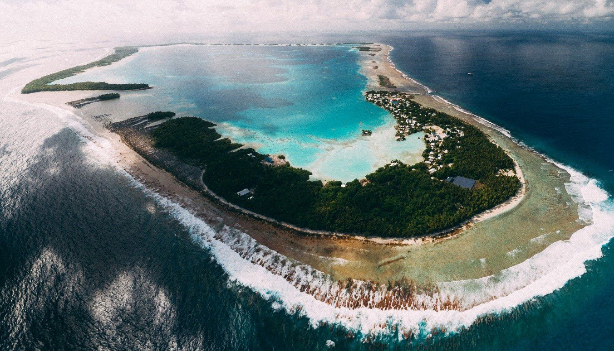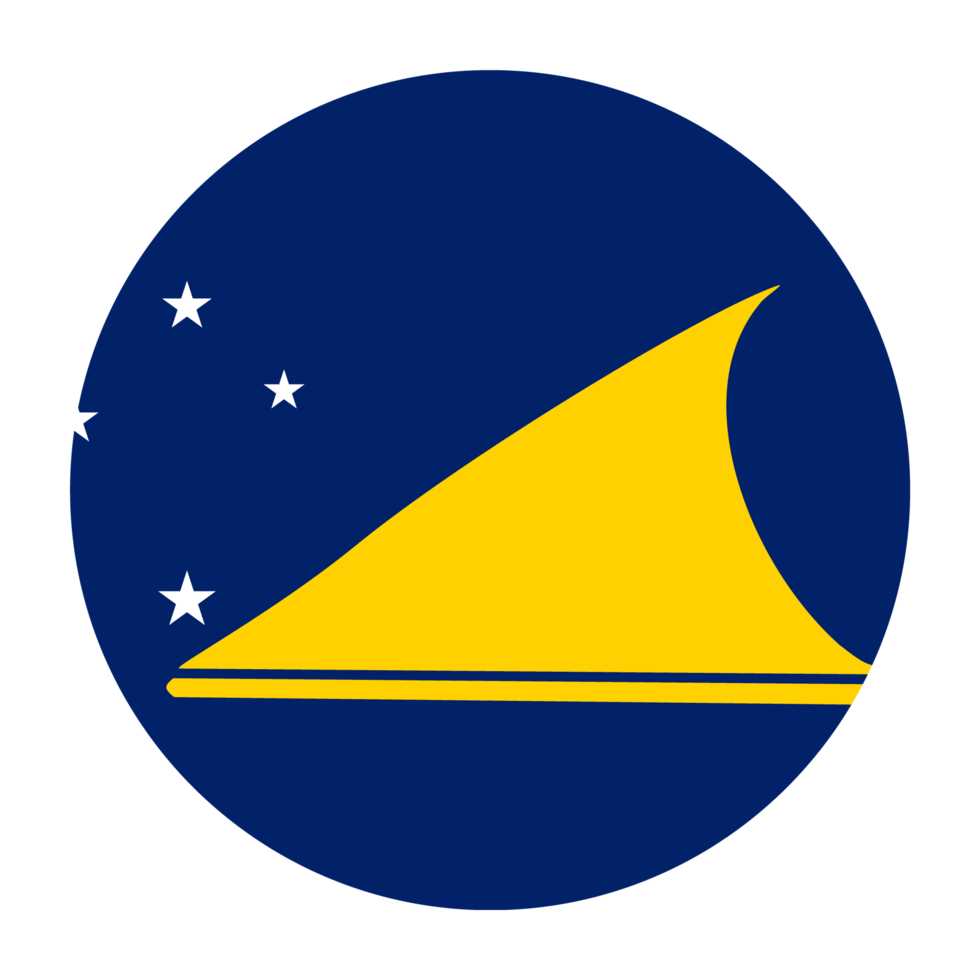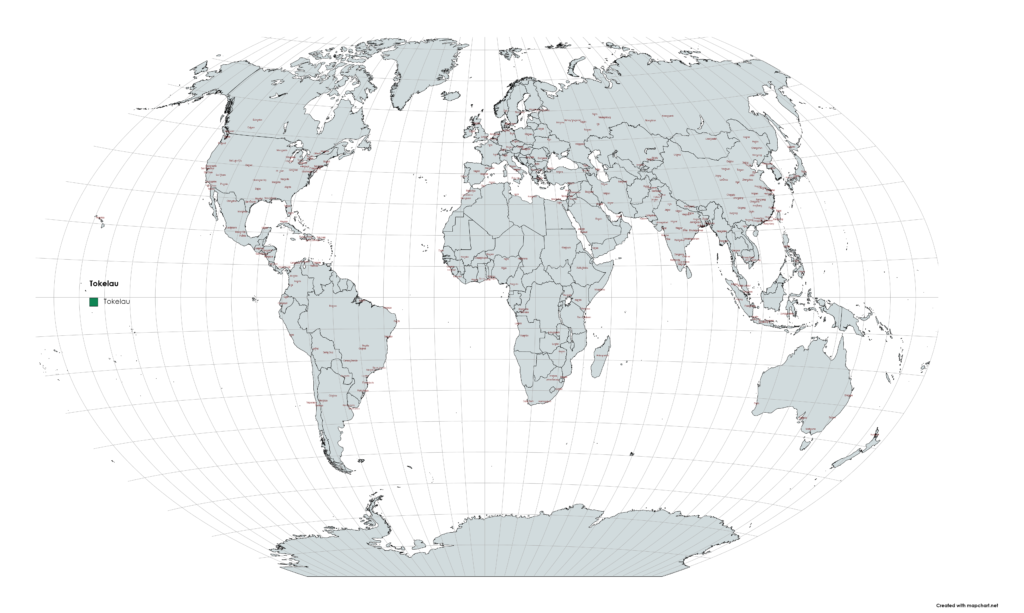Tokelau travel tips
Tokelau travel tips: A Polynesian territory, comprises three atolls with vibrant coral reefs. A remote paradise with a close-knit community and culture.
Atolls 🌎
Tokelau travel tips. Here is a list of all the atolls of the Tokelau.

Atafu Atoll

Nukunonu Atoll

Fakaofo Atoll
Before you go 🛩
Important information you should know before your trip
Info

Capital | Fakaofo, Atafu, Nukunonu
Flag Codes:
ISO alpha-2 TK,
ISO alpha-3 TKL
Currency
Badge | New Zealand Dollar
CODE | NZD
NUMBER | 554
SYMBOL | $
FRACTION | penny
Mobile Coverage
Dialing Code | +690
SIM Card
Coverage | 3G / 4G / 5G |
Mobile Networks |

Location
Tokelau is a dependent territory of New Zealand located in the South Pacific Ocean. It is composed of three main atolls: Atafu, Nukunonu, and Fakaofo. Here is the approximate geographic location of Tokelau:
Latitude: 8° 38′ 21″ to 9° 25′ 05″ South Longitude: 171° 04′ 37″ to 172° 29′ 28″ West
Tokelau is situated about halfway between New Zealand and Hawaii. It is located north of Samoa, east of Tuvalu, and south of the Phoenix Islands in Kiribati. The territory is spread over a total land area of about 12.2 square kilometers (4.7 square miles), making it one of the smallest countries in the world.
Currency
The official currency of Tokelau is the New Zealand dollar (NZD).
As a territory of New Zealand, Tokelau uses the New Zealand dollar as its legal tender.
The New Zealand dollar is denoted by the symbol “$” and is divided into 100 cents.
Banknotes are available in denominations of $5, $10, $20, $50, and $100, while coins are available in denominations of 10 cents, 20 cents, 50 cents, $1, and $2.
It’s important to note that Tokelau is a small, remote territory with limited economic activities and infrastructure.
Cash is the most commonly used form of payment on the islands, and it’s advisable to carry enough New Zealand dollars in cash when visiting Tokelau, as credit card acceptance and access to ATMs may be limited or unavailable.
Languages
The official languages of Tokelau are Tokelauan and English. Tokelauan is a Polynesian language spoken by the majority of the population. It is the most widely used language for everyday communication, cultural expression, and community activities. English is taught in schools and is commonly used in official government settings, business transactions, and education.
Tokelauan is closely related to other Polynesian languages such as Samoan and Tuvaluan. It has its own distinct vocabulary, grammar, and pronunciation. The language is an essential part of Tokelauan identity and culture, and efforts are made to preserve and promote its use within the community.
Climate 🌡
Tokelau has a tropical climate characterized by warm temperatures, high humidity, and consistent rainfall throughout the year. Here are some key features of the climate in Tokelau:
Temperature: Tokelau experiences warm temperatures year-round, with average highs ranging from 28 to 32 degrees Celsius (82 to 90 degrees Fahrenheit). The nights are generally cooler, with temperatures dropping to around 22 to 24 degrees Celsius (72 to 75 degrees Fahrenheit).
Humidity: The humidity in Tokelau is high, especially during the wet season. Humidity levels often exceed 80%, contributing to a muggy and sticky feel in the atmosphere.
Rainfall: Tokelau has a consistent level of rainfall throughout the year, with the wettest months typically occurring from November to April. Rainfall is usually in the form of short, intense showers or thunderstorms. The annual average rainfall is around 2,500 to 3,000 millimeters (98 to 118 inches).
Tropical Cyclones: Tokelau is situated in an area prone to tropical cyclones, especially during the cyclone season, which generally runs from November to April. These cyclones can bring heavy rainfall, strong winds, and rough seas to the islands.
Trade Winds: Tokelau is influenced by the southeast trade winds, which bring moisture from the ocean and contribute to the high humidity and rainfall in the region.
Tokelau travel tips
If you’re planning a trip to Tokelau, here are some travel tips to enhance your experience:
Access:
Tokelau is accessible by boat from Samoa. Limited trips; plan accordingly and check schedules in advance.
Culture:
Embrace local customs. Respectful behavior is crucial; ask before taking photos of people.
Activities:
Snorkeling and diving opportunities abound. Respect marine life and coral reefs.
Health Precautions:
Bring essential medications. Limited healthcare facilities are available.
Transportation:
Walk or use bicycles to explore. Limited motor vehicles available; prioritize eco-friendly travel. View Guide.
Waste Management:
Practice responsible tourism; dispose of waste properly, considering the limited resources.
Community Engagement:
Participate in local events or community activities to enrich your experience.
Enjoy your time in Tokelau!

The best of the best
The cuisine of Tokelau is based on local and traditional Pacific Island flavors, with an emphasis on fresh seafood and locally sourced ingredients.

Pulaka
Pulaka, also known as swamp taro, is an important root vegetable in Tokelauan cuisine.

Octopus
It is often prepared by boiling or grilling and served with coconut milk or in savory dishes.

Lu (Traditional Feast)
Lu is a traditional cooking method in which food is cooked in an underground oven.
Here are some typical foods you might find in Tokelau:
Fish: Given the abundance of surrounding ocean waters, fish is a staple in the Tokelauan diet. Common fish varieties include tuna, mahi-mahi, trevally, and reef fish. Fish is often cooked by grilling, steaming, or in coconut-based dishes.
Coconut: Coconuts are a versatile ingredient used in many Tokelauan dishes. The flesh, milk, and oil of coconuts are incorporated into various recipes, including curries, desserts, and beverages.
Breadfruit: Breadfruit is a starchy fruit that is widely consumed in Tokelau. It is often cooked by boiling, baking, or roasting and served as a side dish or main course. It has a mild flavor and a texture similar to potatoes.
Tropical Fruits: Tokelau is known for its abundance of tropical fruits, including bananas, papayas, mangoes, and pineapples. These fruits are enjoyed fresh or used in desserts and fruit salads.
Traditional Tokelauan food is often enjoyed during special occasions, cultural events, or family gatherings.
Transportation 🚥
More information about this country
Choose your destination 📍🗺
Useful Links ✅



